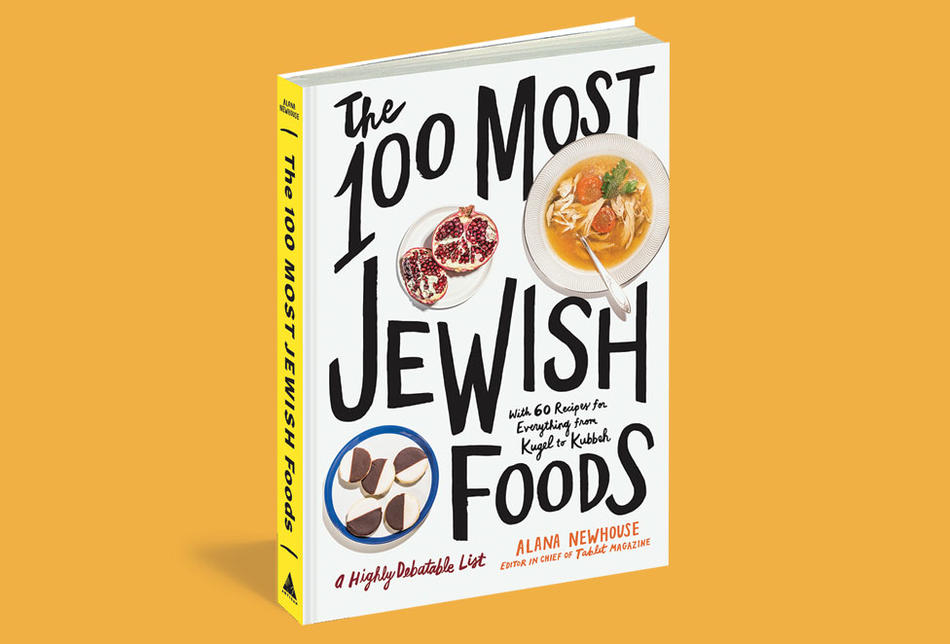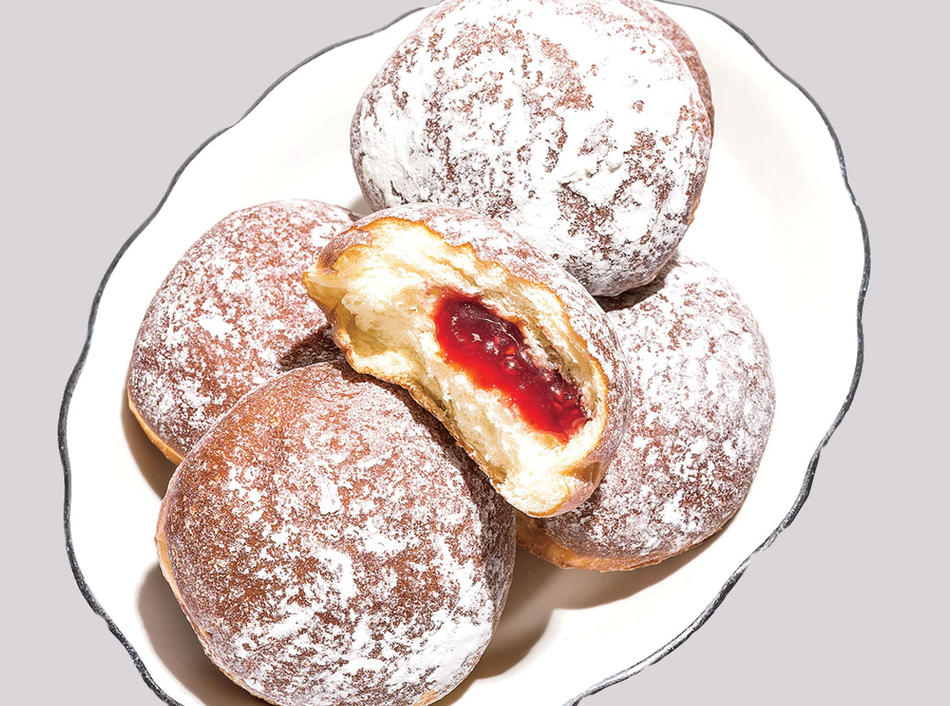Food plays a starring role in almost every part of Jewish culture. There would be no Passover without matzo-ball soup, no Rosh Hashanah without apples and honey, and no visit to a Jewish mother without a meal — or three.
But which foods and recipes best represent “the rhythms of the Jewish calendar and the contingencies of the Jewish experience”? That is “highly debatable,” says Alana Newhouse ’00BC, ’02JRN, the founder and editor in chief of Tablet, an online magazine of Jewish news and ideas. Still, in her new book, The 100 Most Jewish Foods, she summons a cadre of voices to create a fun list of everything you might find on Bubbe’s table, from the traditional (bialys, chopped liver, brisket) to the slightly more unconventional (Sweet’N Low packets, Bazooka bubble gum) to the downright irreverent (bacon). For Hanukkah, with its emphasis on fried foods, Newhouse shares legendary Jewish-cookbook author Joan Nathan’s recipe for sufganiyot — jelly-stuffed doughnuts. And to mark Christmas in the best Jewish way, turn to the entry on Chinese food — writer Marc Tracy ’07CC argues that a holiday Peking duck is “a prayer you can eat.”
Recipe: Sufganiyot
By Joan Nathan
Makes about 36 doughnuts
— 1 tablespoon (10 grams) active dry yeast
— 3 tablespoons (38 grams) granulated sugar
— ¼ cup (60 milliliters) water
— ½ cup (120 milliliters) lukewarm milk
— 1 large egg
— 1 large egg yolk
— Pinch of kosher salt
— Finely grated zest of 1 lemon
— 3½ cups (435 grams) unbleached all-purpose flour, plus more for dusting
— 3½ tablespoons (48 grams) unsalted butter, at room temperature
— Vegetable oil, for deep-frying
— 1 cup (240 milliliters) raspberry, apricot, strawberry, or any flavorful jam, dulce de leche, Nutella, or lemon curd
— Confectioners’ or granulated sugar, for rolling and dusting
In a large bowl, dissolve the yeast and 1 tablespoon (12 grams) of the granulated sugar in the water, then stir in the milk.
Add the egg, egg yolk, salt, lemon zest, flour, remaining 2 tablespoons (26 grams) granulated sugar, and the butter. Mix with your hands until a dough forms, then knead the dough on a clean countertop until the dough is sticky and elastic.
Transfer the dough to a clean, lightly oiled bowl, cover with plastic wrap or a clean kitchen towel, and let rise in a warm place for at least 1 hour, until doubled in volume. If you want, you can let the dough rise overnight in the refrigerator; let it come to room temperature before rolling and cutting.
Dust a clean work surface with flour. Roll the dough out to a ½-inch (1.5-centimeter) thickness. Using the top of a glass or a biscuit cutter, cut out rounds about 2 inches (5 centimeters) wide and let rise for 30 minutes.
Heat at least 2 inches (5 centimeters) of vegetable oil in a heavy-bottomed pot over medium heat until it reaches 375°F (190ºC) or is about to bubble.
Drop the doughnuts, 4 or 5 at a time, into the hot oil. Cook for 2 to 3 minutes on each side, turning when brown. You should see diminished bubbling and hear less sizzling when the doughnuts are ready to turn. Transfer to paper towels to drain. Repeat to fry the remaining doughnuts.
Using a pastry or cupcake injector (available at cooking stores and online), fill each doughnut with about 1 teaspoon of jam. Roll the sufganiyot in confectioners’ or granulated sugar and serve immediately.
Recipe from The 100 Most Jewish Foods, by Alana Newhouse (Artisan Books), © 2019.




